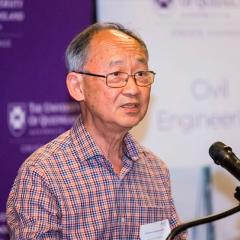Research that could predict and prevent catastrophic dam failures has won a $1 million Future Fellowship.
The funding, announced by the Australian Research Council, will help University of Queensland Civil Engineering researcher Associate Professor Alexander Scheuermann’s efforts to get the jump on nature by developing a tool for predicting erosion within dams that can cause dam failure.
“Seepage water in a dam invades the soil’s pore structure, potentially causing erosion that can ultimately destroy the dam itself, if not detected in time.” Dr Scheuermann said.
“We have seen the consequences of catastrophic dam failures in Kenya and Laos only this year, with tragic outcomes.”
“Having a better understanding of this process of erosion and its development over time, could help us predict a malfunction if we can look inside the dam using suitable observation methods,” he said.
“These systems can warn dam operators of critical situations and will therefore help preventing dam failures, potentially saving lives and property.
“Dams are vital structures for future water and energy supply.
“They are more needed than ever considering the increasing demand in hydropower and especially drinking water supply.
“The uncertainties connected to climate change and its consequences force us to further develop water reservoirs.
“The world-wide increase in dam construction activities is a testimony of this demand.”
Dr Scheuermann will use innovative high-frequency electromagnetic measurement techniques in combination with other methods to observe the consequences of erosion within dams and to forecast its evolution with novel predicting models.
“It’s hard to know what is going on within a dam. We can only see the surface, which can be nice and tidy like the icing of a cake,” he said
“However, similar to a cake, we do not know what the inside is made of.
“By using high-frequency electromagnetic measurement techniques we can discover the interior of a dam and identify any structural problem, for example caused by erosion.”
Media: Associate Professor Alexander Scheuermann, a.scheuermann@uq.edu.au, +61 (0)7 3346 8720
Faculty of Engineering, Architecture and Information Technology communications, comms@eait.uq.edu.au, + 61 (0)430 511 615



